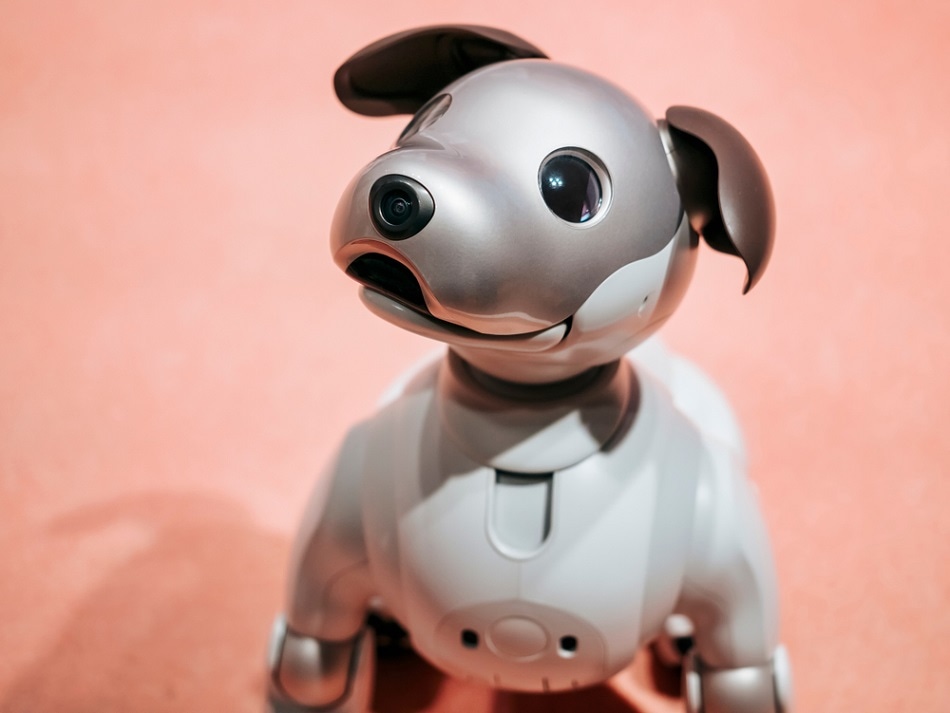As part of this year’s London Design Week, Sony will present their vision for robotics and artificial intelligence ‘Affinity and Autonomy’, at the V&A Museum. The exhibition will attempt to translate innovation into state-of-the-art perceptual experiences and reveal just how the tech giant conceptualizes the evolution of the relationship between humans and robotics.

Image credit: VTT Studio / Shutterstock.com
Director of Sony Design Centre Europe, Philip Rose, said the exhibition is an inquiry into “the correlation between the human condition and the onset of forward-thinking technology”.
It is widely thought that we are well on the way to having advanced robotics assimilate into our everyday lives and the concepts that were once confined to the pages of science fiction novels and cinema screens edge toward reality. Sony believes “robotics will play an integral role in our lives, society and infrastructure” in the near future. Thus, as a symbiotic relationship develops between humans and robotics, the artificial intelligence that drives the technology will evolve emotionally as much as it does intellectually. This progress will present humans with artificial intelligence and robotic systems that seem to be “alive”.
The ‘Affinity and Autonomy’ exhibition give place to the installation ‘Pendulus’, an interactive robotic pendulum that can detect humans. The free will of robotics represented by the random movements of the pendulum’s swing. Human presence can be detected by the autonomous robotics, which is then recognized and reflected in the kinetic motion.
In an increasing sensor-filled world the installation places focus on the emergence of artificial intelligence and allows visitors to explore its behavior and own personality.
Philip Rose, Director of Sony Design Centre Europe
The piece attempts to provoke questions concerning the natural feelings the visitor may have towards the robotics as it acknowledges human presence and casts its eye on us. Furthermore, the visitor is placed in an uncertain position as to who is the observer becomes unclear and the endeavor is thus to promote emotion and sensitivity between humans and robotics and the relationships that may form between them in the near future.
Running from September 12th to September 22nd, ‘Affinity and Autonomy’ represents a perception of the future of artificial intelligence and robotics: a world in which technology, intelligence, creative design, and the human condition are more intertwined.
Since the company’s inception nearly seven decades ago, Sony’s design and innovation has been led by the doctrine “do what has never been done before,” stated Rose.
The world’s first Entertainment Robot, Sony’s ‘AIBO’, walked into our lives in 1999. In the 20 years since then, it’s become clear that sensing technology and artificial intelligence will have a firm place in our lives, and our homes.
Philip Rose
Rose added: "It’s more important than ever to acclimatize to how it will shape our futures, and that’s what this exhibition aims to encourage.”
Sony believes that in coming to understand robotics and the ability of artificial intelligence to develop feelings, we will see the relationships between humans and technology evolve learning to empathize and perhaps this can spark the formation of communities. Then, we may be guided to a future where the ways in which we interact with robots are beyond anything we could have previously imagined, providing us with a potentiality beyond our current scope.
Disclaimer: The views expressed here are those of the author expressed in their private capacity and do not necessarily represent the views of AZoM.com Limited T/A AZoNetwork the owner and operator of this website. This disclaimer forms part of the Terms and conditions of use of this website.